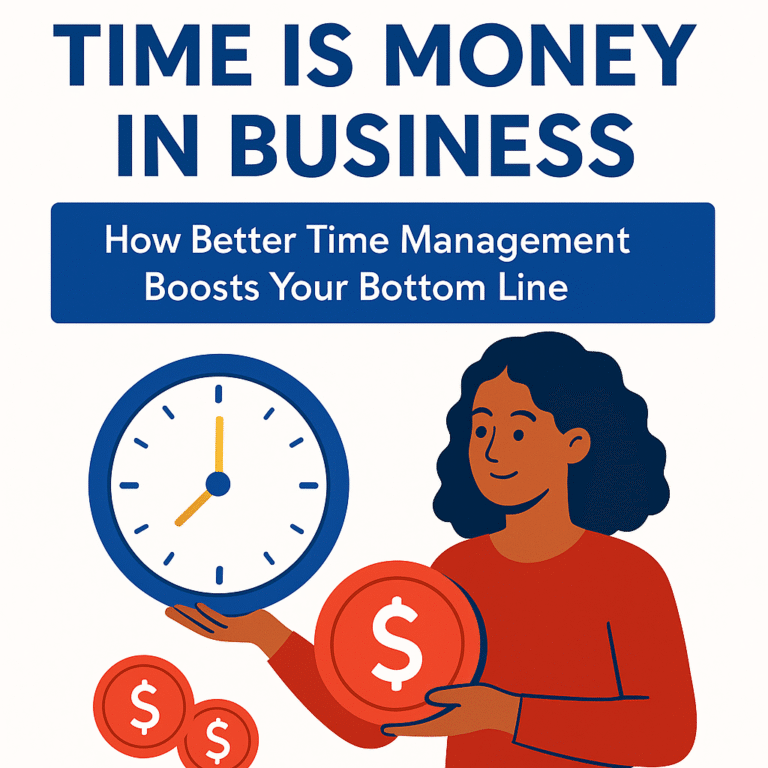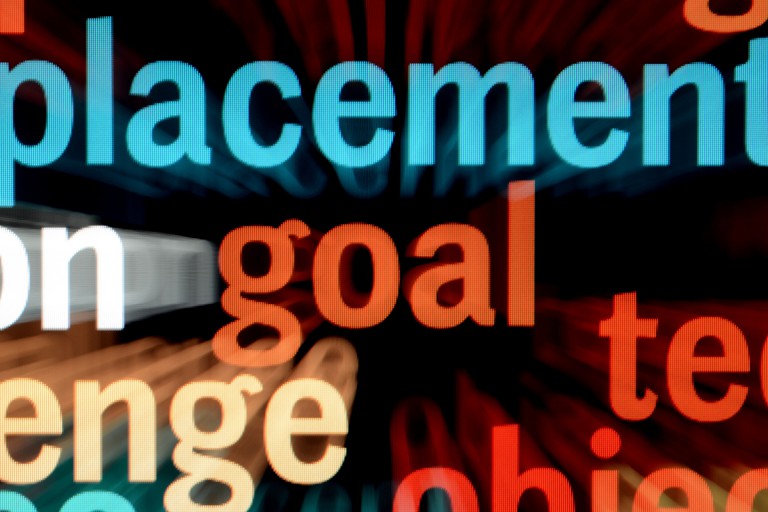Financial Freedom Friday

When I first started Backbone America, I wasn’t chasing an income replacement. I was chasing flexibility.
I’m not the type of person who wants to retire and do nothing. Even when I was a stay-at-home mom, I stayed active—writing books under my pen name, Reena Jacobs, and building things behind the scenes. Freedom, for me, has always meant movement—but on my terms. The ability to work anywhere. To choose when. To choose how. To create without burning out.
I didn’t want a job with more hours or a business that owned me. I wanted a model I could scale—something that didn’t need me in the trenches every day, but still allowed me to shape the outcome. That balance of impact and independence? That was the vision.
And I knew it wouldn’t come easy. I’d spent years as a business advisor watching founders wrestle with the very thing I was trying to build. Truthfully, I didn’t even want the entrepreneur life—at least not the version I saw. But staying on the path I was on, being just an employee, wasn’t going to give me the financial freedom I wanted either.
So I started doing what I knew how to do: I ran the numbers. I projected what it would take—financially, emotionally, energetically—to get there. And I built my roadmap.
That same clarity is what I taught inside Map Your Business Success. Because vision isn’t just about dreaming. It’s about anchoring that dream in numbers, choices, and sustainability. If you don’t know your destination, the best strategies still won’t take you where you want to go.
And that’s what this post is about: how to map your business so it actually leads you somewhere meaningful. Because the people I work with aren’t just trying to get rich quick. They want options. Stability. Peace of mind. Legacy. That kind of freedom isn’t an accident. It’s a map.
Define Your Destination

Not in vague terms like “quitting my job” or “making six figures”—but in lived, tangible outcomes. What will your days look like when your business is working the way you want it to? How will it support your life, not consume it?
This is the part most people skip. They jump into offers, logos, and marketing—but never slow down to ask: Where is this even taking me?
f you don’t define the destination, it’s easy to chase what’s urgent instead of what’s aligned. But once you do, it becomes your filter. You stop building for what looks good and start building for what actually fits. That clarity becomes your GPS. It shapes every financial choice—from how you price your time to what you say yes to.
That’s why you might notice my Done-For-You services come with an application. You’re not just vetting me—I’m vetting you too. I meant it when I said I wanted to work on my own time. Even with a scalable business, I choose who I work with and when—because that’s what freedom looks like for me. That’s what aligns with my vision. Yours might be different—and that’s okay. But knowing the difference is what makes the roadmap work.
When you know your destination, it becomes easier to say no to distractions. You’re no longer building for what looks good. You’re building for what feels right. That’s the foundation of any real roadmap to financial freedom.
Write down what financial freedom looks like for you—literally.
Describe your ideal workday, your income needs, and how your business supports the life you want. Not just the dream—outline what it costs, what it requires, and what it frees you to do.
Plot Your Priorities
Once your vision is clear, the next step is figuring out what actually gets you there—without pulling you off track in the process.
This is where a lot of founders stall out. They try to do everything: launch a course, offer a service, start a podcast, build a YouTube channel, write a newsletter… and still wonder why they feel busy but broke.
I’ll be honest—when I first started Backbone America, it took me four or five months to actually get things moving. There were some false starts, not because I wasn’t working, but because I hadn’t taken the time to plot my priorities properly. Once I created a roadmap, I stopped running in circles, changing directions, and redoing what was half-done.
Here’s the truth: not everything matters equally.
The roadmap to financial freedom only works if it has a hierarchy. That’s the foundation of a sustainable path to financial independence. You need to know what moves the needle—for you. For me, that meant structuring my business around recurring revenue and digital products. That gave me the stability I needed and protected my time. Anything else had to support that core—or it didn’t make the cut.
Everything else? Optional.
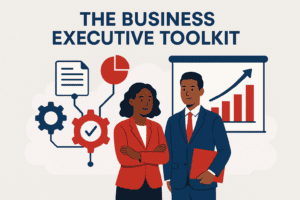 It’s tempting to try to be everywhere and do everything. But when your time and energy are limited (and they always are), clarity becomes leverage. The roadmap to financial freedom works best when it’s focused. If you’re unsure where to begin, The Business Execution Toolkit can help you organize your goals into clear, practical steps based on what matters most to you.
It’s tempting to try to be everywhere and do everything. But when your time and energy are limited (and they always are), clarity becomes leverage. The roadmap to financial freedom works best when it’s focused. If you’re unsure where to begin, The Business Execution Toolkit can help you organize your goals into clear, practical steps based on what matters most to you.
Choose one core offer or income stream to focus on for the next 90 days.
Not five things. One. Then make a list of everything you’re doing in your business right now—and cut anything that doesn’t support that core.
Break It Down to Daily Moves
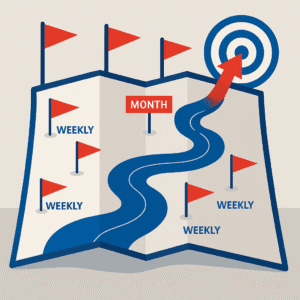
I didn’t start by trying to tackle a 10-year plan all at once. I looked at what it would take to meet my goal for one year, then broke that down by month. From there, it got even smaller: What could I test this week? What could I measure this month?
One of my first milestones was simple: get 50 leads in a month.
So I created a single lead magnet. I paired it with a small ad budget and an automated email campaign. That test taught me a lot—because while the ad got clicks, the lead magnet didn’t convert the way I expected.
And that was the point.
Small tests like that helped me figure out what worked and what didn’t. It’s better to learn early than to invest months perfecting something no one wants.
Once I had leads coming in consistently, the next step was conversions. Were they buying what I was offering? For example, the 31-Day Business Startup Challenge helped me understand what people actually needed—and were willing to pay for.
What worked, I increased. What didn’t, I let go.
That’s what building looks like: small moves that reveal direction. The roadmap to financial freedom isn’t a leap—it’s layers. Momentum doesn’t come from magic. It comes from maintenance.
Set a monthly milestone, then break it into weekly experiments.
For example, if your goal is 50 new leads this month, decide what you’ll test this week to get 12.5. Track it. Tweak it. Build from there.
Remove Roadblocks and Resource Gaps
There are no guarantees in life—or in business. Well, one: nothing is ever perfect.
You hit a bump—a launch flops, sales go quiet, or nothing’s converting like you hoped—and suddenly the whole vision feels fragile. That doesn’t mean you’re off track. It just means it’s time to pause, reflect, and adjust.
Here are a few questions I’ve learned to ask myself when things feel off:
What needs to start?
What needs to stop?
What needs to change?
In the early stages of Backbone America, I was so overwhelmed with so much “busy work,” I just couldn’t get to the income-generating tasks. I was trying to run everything by myself, with no systems in place. Every day felt like survival. I pushed through, overwhelmed, convinced that effort alone would carry me forward.
Eventually, I had to step back and admit: this isn’t sustainable. I needed better systems. I needed automation. I needed support. And I needed to stop treating urgency like a strategy.
Because when you’re drowning, you’re not trying to move forward—you’re just trying to keep your head above water.
Taking a step back and reflecting gave me the space—mentally and logistically—to start moving with intention instead of reaction.
If you’re ready to take stock of your financial foundations and build in a way that supports sustainable growth, this guide to Putting Profit First is a solid place to start. It’s not about cutting corners—it’s about keeping profit front and center from the start.
Audit your business.
Make a list with three columns: Start, Stop, Change. Choose one thing in each category to act on this week. Focus on clearing space—not just adding effort.
Stay Accountable to Your Map
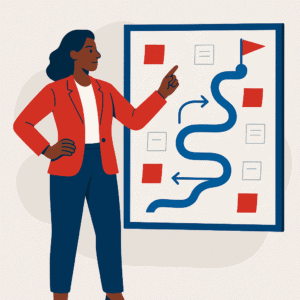
I’m a planner. I like to write things down and map out a path. Then I share with others what I’m doing—not for accountability, but as a way to invite them into my life and my process.
This year, I did something new that’s had a huge impact on my perspective: I made a vision board.
Creating that board—laying out the life and business I wanted—made the goals feel concrete. Looking at it now is more than motivation. It’s a mirror. It reminds me what I said I wanted. It helps me realign when I start drifting.
That’s the thing about a roadmap: it only works if you keep looking at it.
Review it. Revise it. Recommit to it. In your own way.
Pick your method of self-alignment.
Whether it’s a vision board, a planner, a goal tracker, or simply sharing milestones—choose one way to stay connected to your map, and use it often.
Final Thoughts: Map Before You Move
You don’t need everything figured out to start moving with intention. You don’t need to quit your job, perfect your offer, or wait for some magic signal that says you’re ready. You just need a direction—and the willingness to choose your next step based on where you actually want to go.
Your business can be your freedom vehicle. But not without a map. Not without a route. And not without a reason.
If you’re serious about turning your vision into something real, don’t wing it. Write it down. Break it into pieces. Give it space to change—and permission to grow.
Because freedom isn’t found in the hustle. It’s built through alignment.


